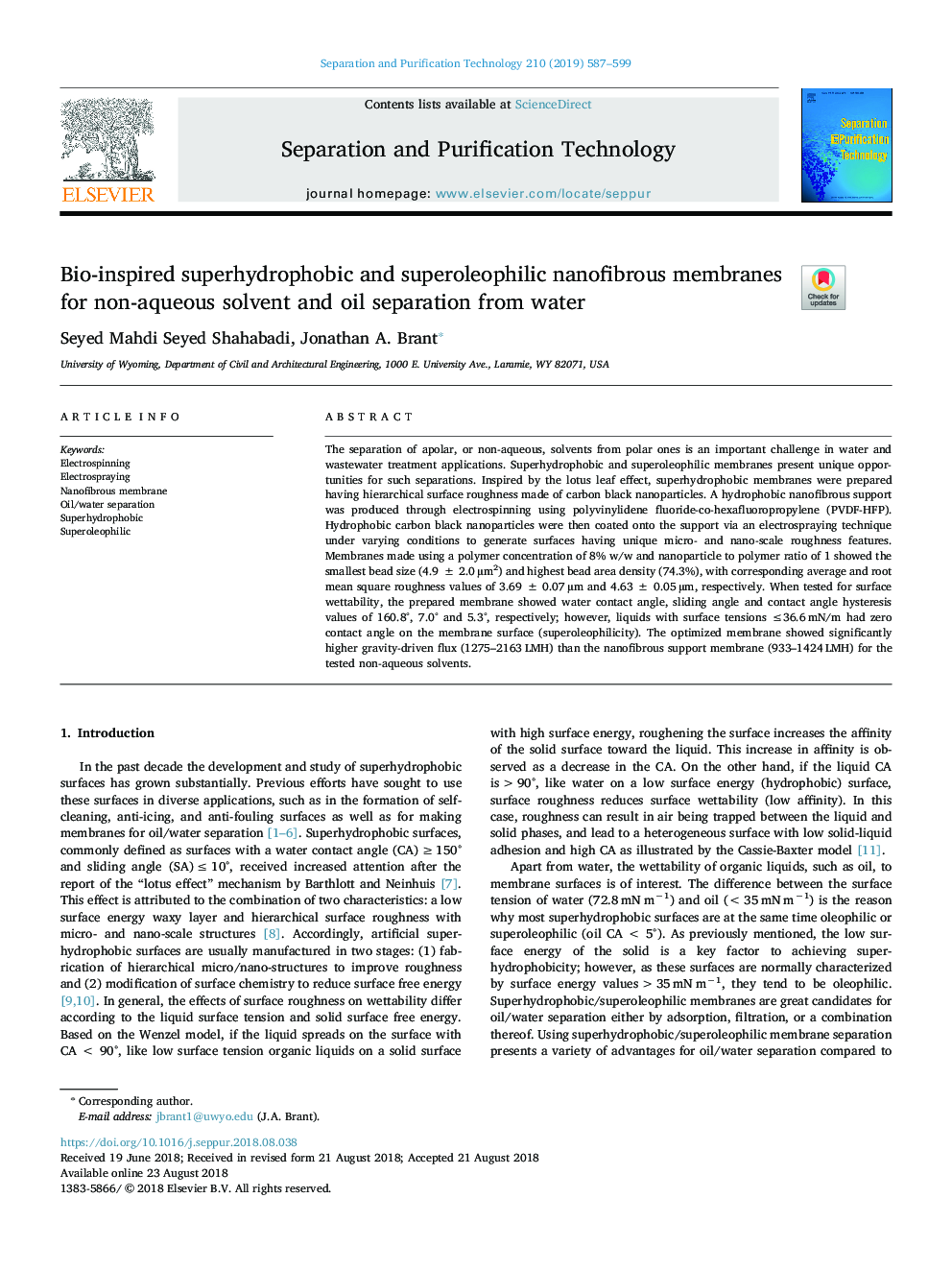| کد مقاله | کد نشریه | سال انتشار | مقاله انگلیسی | نسخه تمام متن |
|---|---|---|---|---|
| 11003291 | 1456911 | 2019 | 13 صفحه PDF | دانلود رایگان |
عنوان انگلیسی مقاله ISI
Bio-inspired superhydrophobic and superoleophilic nanofibrous membranes for non-aqueous solvent and oil separation from water
ترجمه فارسی عنوان
غشاء نانوفیلری سوپر هیدروفوفیک و سوپرئولوفیلی بیوشیمیایی برای حلال غیر آبی و جداسازی روغن از آب
دانلود مقاله + سفارش ترجمه
دانلود مقاله ISI انگلیسی
رایگان برای ایرانیان
کلمات کلیدی
موضوعات مرتبط
مهندسی و علوم پایه
مهندسی شیمی
تصفیه و جداسازی
چکیده انگلیسی
The separation of apolar, or non-aqueous, solvents from polar ones is an important challenge in water and wastewater treatment applications. Superhydrophobic and superoleophilic membranes present unique opportunities for such separations. Inspired by the lotus leaf effect, superhydrophobic membranes were prepared having hierarchical surface roughness made of carbon black nanoparticles. A hydrophobic nanofibrous support was produced through electrospinning using polyvinylidene fluoride-co-hexafluoropropylene (PVDF-HFP). Hydrophobic carbon black nanoparticles were then coated onto the support via an electrospraying technique under varying conditions to generate surfaces having unique micro- and nano-scale roughness features. Membranes made using a polymer concentration of 8% w/w and nanoparticle to polymer ratio of 1 showed the smallest bead size (4.9â¯Â±â¯2.0â¯Âµm2) and highest bead area density (74.3%), with corresponding average and root mean square roughness values of 3.69â¯Â±â¯0.07â¯Âµm and 4.63â¯Â±â¯0.05â¯Âµm, respectively. When tested for surface wettability, the prepared membrane showed water contact angle, sliding angle and contact angle hysteresis values of 160.8°, 7.0° and 5.3°, respectively; however, liquids with surface tensions â¤36.6â¯mN/m had zero contact angle on the membrane surface (superoleophilicity). The optimized membrane showed significantly higher gravity-driven flux (1275-2163â¯LMH) than the nanofibrous support membrane (933-1424â¯LMH) for the tested non-aqueous solvents.
ناشر
Database: Elsevier - ScienceDirect (ساینس دایرکت)
Journal: Separation and Purification Technology - Volume 210, 8 February 2019, Pages 587-599
Journal: Separation and Purification Technology - Volume 210, 8 February 2019, Pages 587-599
نویسندگان
Seyed Mahdi Seyed Shahabadi, Jonathan A. Brant,
